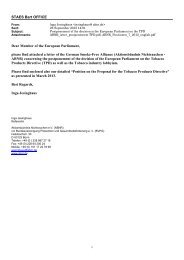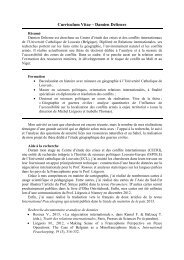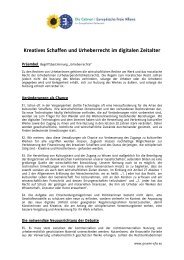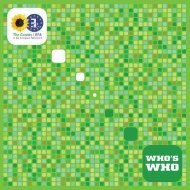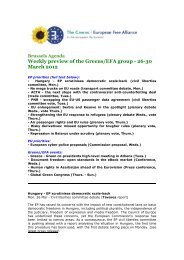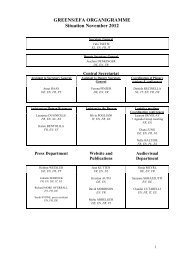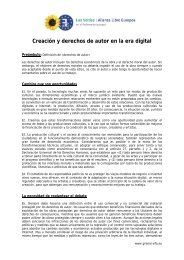Agro-Biotechnology: - The Greens | European Free Alliance
Agro-Biotechnology: - The Greens | European Free Alliance
Agro-Biotechnology: - The Greens | European Free Alliance
You also want an ePaper? Increase the reach of your titles
YUMPU automatically turns print PDFs into web optimized ePapers that Google loves.
24 | Cloned farm animals - a ‚killing application‘? | Cloning in farm animals potential benefits, products and players<br />
4. Cloning in farm animals – potential<br />
benefits, products and players<br />
Copying animals with desirable traits will significantly raise the number of<br />
offspring with distinct genetic conditions and enable the rapid distribution of<br />
desirable qualities throughout the animal populations.<br />
Any economic advantages that might be gained by companies and some farmers<br />
in marketing food derived from cloned animals such as milk and meat<br />
has, on the contrary, no advantages for food producers or consumers. <strong>The</strong>se<br />
products lack the decisive economical advantages that would distinguish them<br />
from other products on the market. Since SCNT can only replicate genetic material<br />
from animals that existed before, new food products with specific advantages<br />
can hardly be expected.<br />
4.1 How many cloned animals exist and what is<br />
their economic relevance?<br />
So far the market for cloned farm animals is still small. <strong>The</strong>re are three known<br />
companies in the US marketing cloned animals for food production. <strong>The</strong>se are<br />
ViaGen (pigs), TransOva (cattle) and Cyagara (cattle) (Fox, 2008). <strong>The</strong> number of<br />
animals available on the market is comparatively low although there are some<br />
precise figures available for the USA and the EU. US officials estimate the<br />
number of cloned farm animals at 600 (Fox, 2008). According to industry, about<br />
120 cloned cattle are available within the EU (as quoted by EGE, 2008).<br />
EGE (2008) gives some information on the number of research institutions involved<br />
in animal cloning but does not reveal its source. It also remains unknown<br />
how many of these institutions are working on farm animals meant for<br />
food production and which of these institutions are working on livestock meant<br />
for xenotransplantation, pharming or other medical purposes:<br />
“At present, more than 160 laboratories in about 37 countries are working on<br />
SCNT. Most of the resources are directed towards livestock cloning (around<br />
75% of cases), whereas less than 30% of the work is directed at laboratory animals.<br />
Cattle are most efficiently cloned by SCNT, which is practised in around<br />
80 laboratories (50% of total cloning labs) in 24 countries.”<br />
Since the cloning of farm animals is also performed in Japan, New Zealand,<br />
Brazil, Argentina and China, the actual numbers of animals are thought to be<br />
several thousand. <strong>The</strong>se figures do not seem to be based on any empirical study,<br />
peer reviewed publication or registration. <strong>The</strong> EFSA estimates the number<br />
of cloned animals to just below 4000:<br />
“<strong>The</strong>re is no world-wide register of clones; similarly no register is available<br />
in individual countries and therefore the number of living clones is difficult<br />
to estimate. From information gathered by EFSA it is estimated that in 2007<br />
in the EU there were about 100 cattle clones and fewer pig clones alive. <strong>The</strong><br />
estimated number in the USA is about 570 cattle and 10 pig clones. <strong>The</strong>re are<br />
also clones produced elsewhere e.g. Argentina, Australia, China, Japan and



